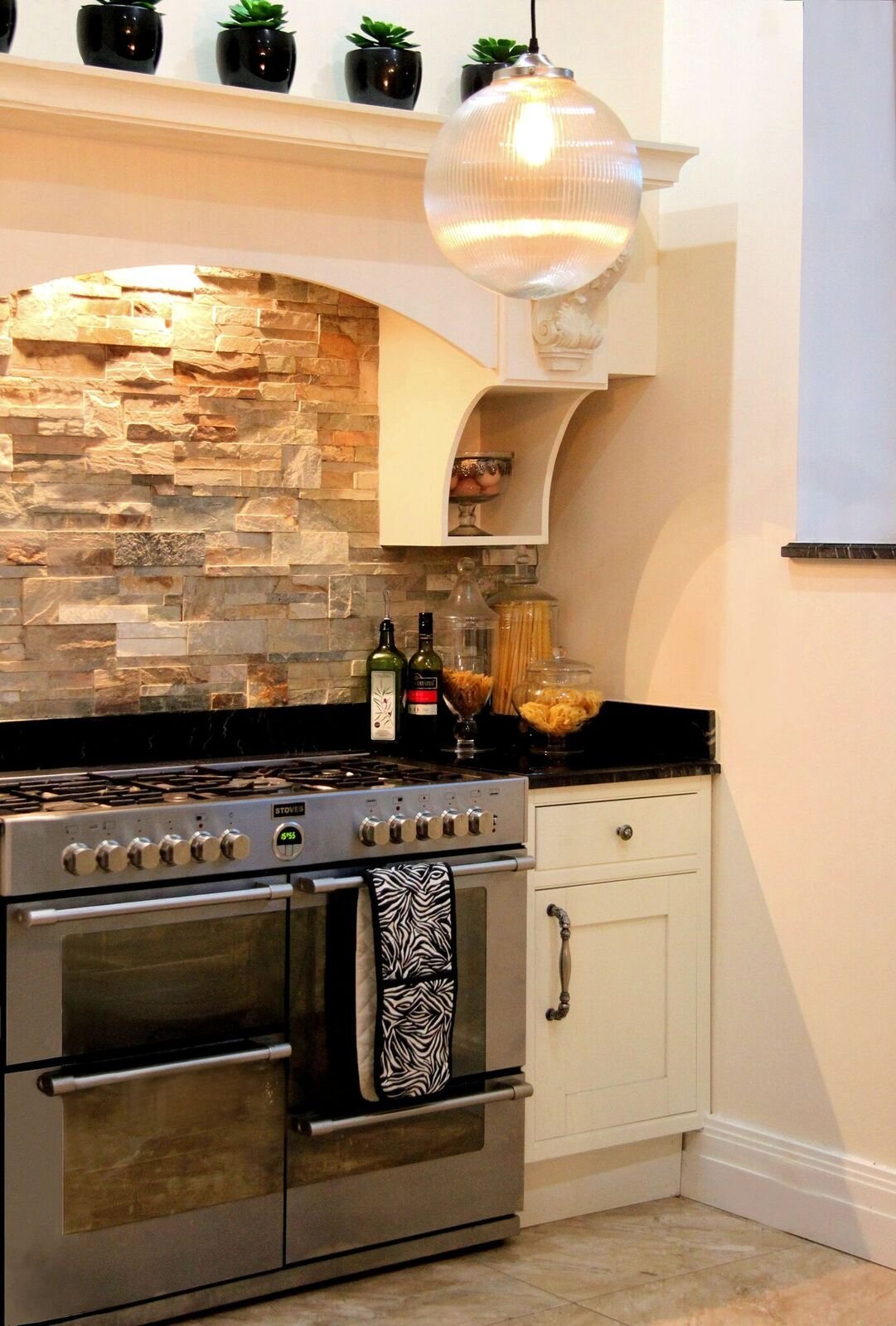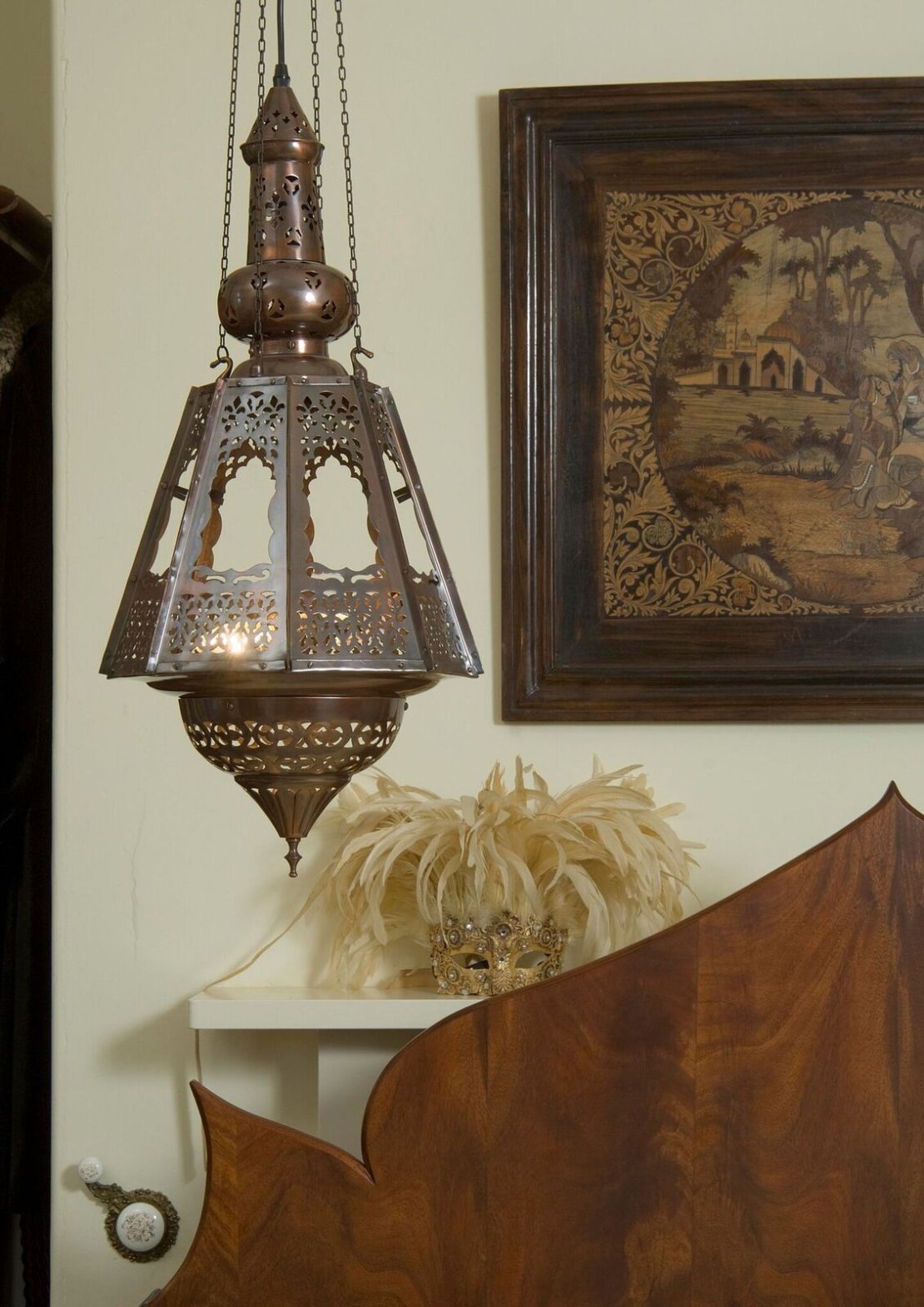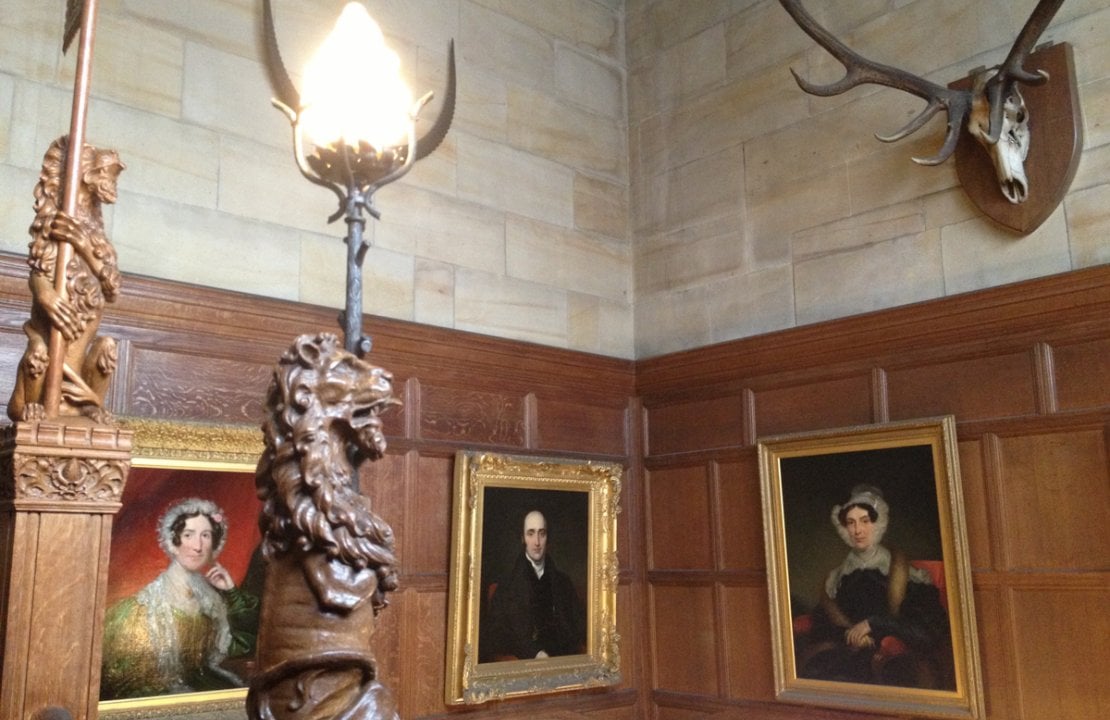So for an office or kitchen worktop area you should choose a bright light that is energy efficient and enables the work area to be well lit. In a bedroom you may want something softer.
How do you work out the appropriate brightness of light needed in each room?
As a general guide use the following:
Determine the size of the room: Multiply the Length x the Width of the Room to get the Room Square Footage.
Determine the Foot Candles by Room Type or Room Purpose: A foot-candle is how bright the light is one foot away from the source. For example, a bathroom or kitchen will require more foot-candles than a living room or bedroom.
- Living Room - 10-20
- Kitchen General - 30-40
- Kitchen Stove - 70-80
- Kitchen Sink - 70-80
- Dining Room - 30-40
- Bedroom - 10-20
- Hallway - 5-10
- Bathroom - 70-80
Let’s start with the hallway.
Hallways
Most hallways have fairly high ceilings so you could get away with a statement piece here on a chain – something that welcomes the visitor and gives an indication of the style of décor used throughout the house. A chandelier or old style lantern is a good choice for a Victorian hallway but ask for advice about the right size of chandelier for your particular space.

Kitchen
The kitchen area used for food preparation could use functional style lighting such as a bronze pendant type light along with downlighters. Chandeliers can look amazing in a kitchen but the issue comes with the regular cleaning required to remove cooking residues and grease. Chandeliers are time consuming to clean, needing to be completely unassembled, the crystals soaked in warm soapy water, then dried. All larger pieces need to be wiped over with warm soapy water then the whole lot reassembled. This could be a mornings work and a job needing to be undertaken 6 monthly. Chandeliers that are not made from crystal can look just as stunning and are far quicker and easier to clean.

Bathroom lighting – see separate article.
Reception rooms and bedrooms
Ideally softer lighting would be used in Victorian rooms meant for eating or relaxation. In a Victorian dining room you may want to use a light on a long chain over the table to make a great centrepiece. This is the ideal place to use a chandelier to make a real statement.
It is very important with heavy lights such as chandeliers that fixings are adequate for the light to hang safely so as not to threaten the safety of anyone passing underneath or damage the ceiling plasterwork. Use of a ceiling rose will also really enhance the appearance of any decorative light fitting such as a chandelier and these come in many different designs and sizes to suit the light fitting, from the plain to the highly decorative with flowers and leaves.
Bedrooms and sitting rooms are best served with soft lighting as the main ceiling light, with lamps used for locations where reading will be undertaken.
Houses with low ceilings such as older period houses are best served with wall lights rather than ceiling lights for which the ceiling height may provide inadequate. By all means use ceiling lights on any upstairs vaulted ceilings or taller rooms, but wall sconces work really well elsewhere. The designs for these range from:
- traditional wall lanterns
- crystal chandeliers
- lights with lamp shades
- brass cast lights
- gas style lanterns
- picture lights

As for lamps, these give a small pool of light and as such need to be bright in order to serve their purpose. Traditional china Chinese style lamps or brass lamps with neutral coloured shades are always a good choice to suit any room.
Interior lighting is an area which if chosen well, really makes a big difference to the elegance and comfort of your home and each of your Victorian rooms.
The Victorian Emporium sells a wide choice of interior lighting for any Victorian or period room of your house, from wall sconces, chandeliers, pendants or flush fitting lights, along with Victorian style sockets and switches. You can read our ultimate guide to period property renovation here.


Be the first to add a comment...